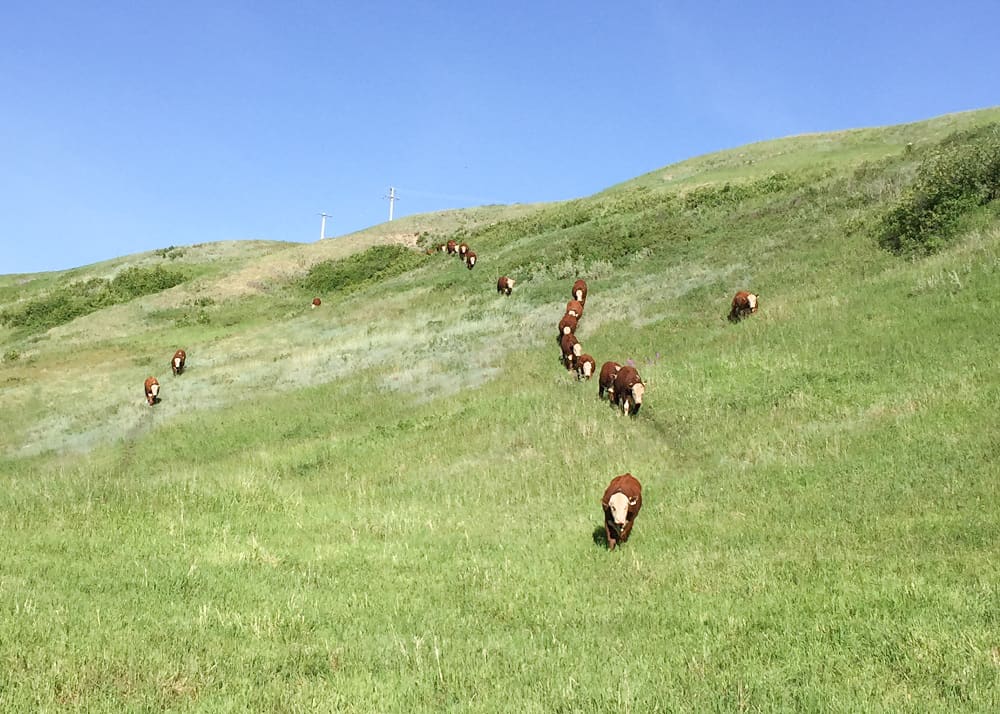
Between the increasing prevalence of plant-based protein and negative messaging from media and celebrities, it has become popular to blame meat production for many of the world’s environmental problems.
Yet livestock, beef cattle in particular, can actually enhance the sustainability of ecosystems and global food security.
One of the most common ways to assess an industry’s environmental impact is to analyze its carbon footprint. Cattle are often labeled as the major cause of climate change. Although the Food and Agricultural Organization of the United Nations attributes 65 per cent of the livestock industry’s environmental footprint to beef, animal agriculture makes up only 14.5 per cent of all carbon emissions.
However, livestock also enhances the health of the pastures they inhabit. Grazing is a natural function in grassland ecosystems, allowing for new growth of carbon-sequestering plants, seed dispersal and maintaining the biodiversity of both plants and animals.
According to the Beef Cattle Research Council, native grasslands can store as much as 200 tonnes of carbon per hectare. However, without cattle grazing, grass growth is affected. Through carefully managed grazing systems, cattle can be used to enhance grassland health so that they even offset their own carbon emissions.
In the right ecological conditions, livestock can help keep carbon from entering the atmosphere by preventing soil degradation, which prevents greenhouse gasses from leaving the ground.
Producers who feed grain-based diets to their cattle have also found ways to introduce initiatives to reduce carbon emissions substantially. This includes the use of certain feed additives which inhibit methanogenic micro-organisms in the digestive tract.
Still, there is much more to environmental sustainability than carbon emissions. Cattle production is often criticized for the amounts of land and water it requires. But livestock are also capable of making use of resources that can’t be transferred to crop production.
In addition to benefiting grassland ecosystems, cattle grazing can take place on marginal lands, which are not well suited for crop growth. Even cattle, which are fed grain-based diets, make use of grains that do not meet human consumption standards. As such, cattle are an important avenue for the use of resources which would otherwise go to waste.
Although beef production requires a substantial amount of water, much of this water does not meet quality standards for human consumption. Switching those marginal grazing areas to cropland as an alternative food source is not a feasible option either since crops demand more water on that type of land.
Canadian beef producers have plenty to celebrate in terms of environmental progress. A 2015 study funded by the Beef Cattle Industry Science Cluster saw a 14 per cent reduction in greenhouse gas emissions from production of the same amount of beef between 1981 and 2011. This reduction is largely due to improved feed efficiency of livestock, meaning that animals can use less feed to produce the same amount of meat.
Another study found that Canadian beef production used 17 per cent less water in 2011 than in 1981. If consumers continue to support the beef industry, further progress and innovation can occur.
While it is easy to point a finger at the potential negative impacts of beef cattle on the environment, their role in global food security is very important to consider. Beef is an excellent source of protein and many other essential nutrients, and as it turns out, has a production cycle that stands to aid ecological functions.
From the standpoint of both social and environmental sustainability, it seems there is more to beef than just a pretty taste.
This op-ed was written by a University of Saskatchewan undergraduate student and reflects the views and opinions of the writer. If you would like to write a rebuttal, please email opinions@thesheaf.com.
—
Emma Cross
Photo: Emma Cross